ENEMY. Denis Villeneuve’s Mystery Thriller Explained
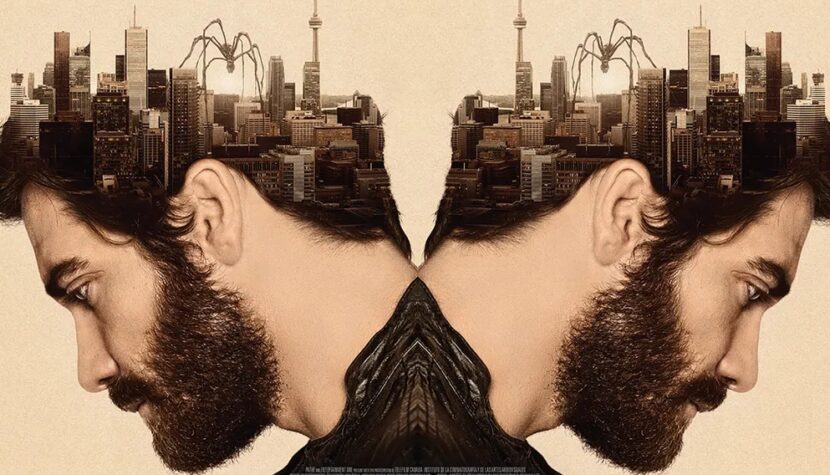
A wanderer lost within the labyrinth perceives it as a complex, endless, and chaotic structure, yet the same labyrinth reveals its logical and deliberate design to an outside observer. From a certain distance, one can discern the intention that guided the labyrinth’s creator.
In his previous film, Denis Villeneuve referenced the labyrinth motif in Prisoners. This served as an intriguing prelude to his next film, Enemy. I had the opportunity to closely examine how the director utilizes this deeply rooted cultural metaphor of the labyrinth on multiple levels – in the plot, character development, the creation of the presented world, and most notably, through a specific type of labyrinthine narrative.
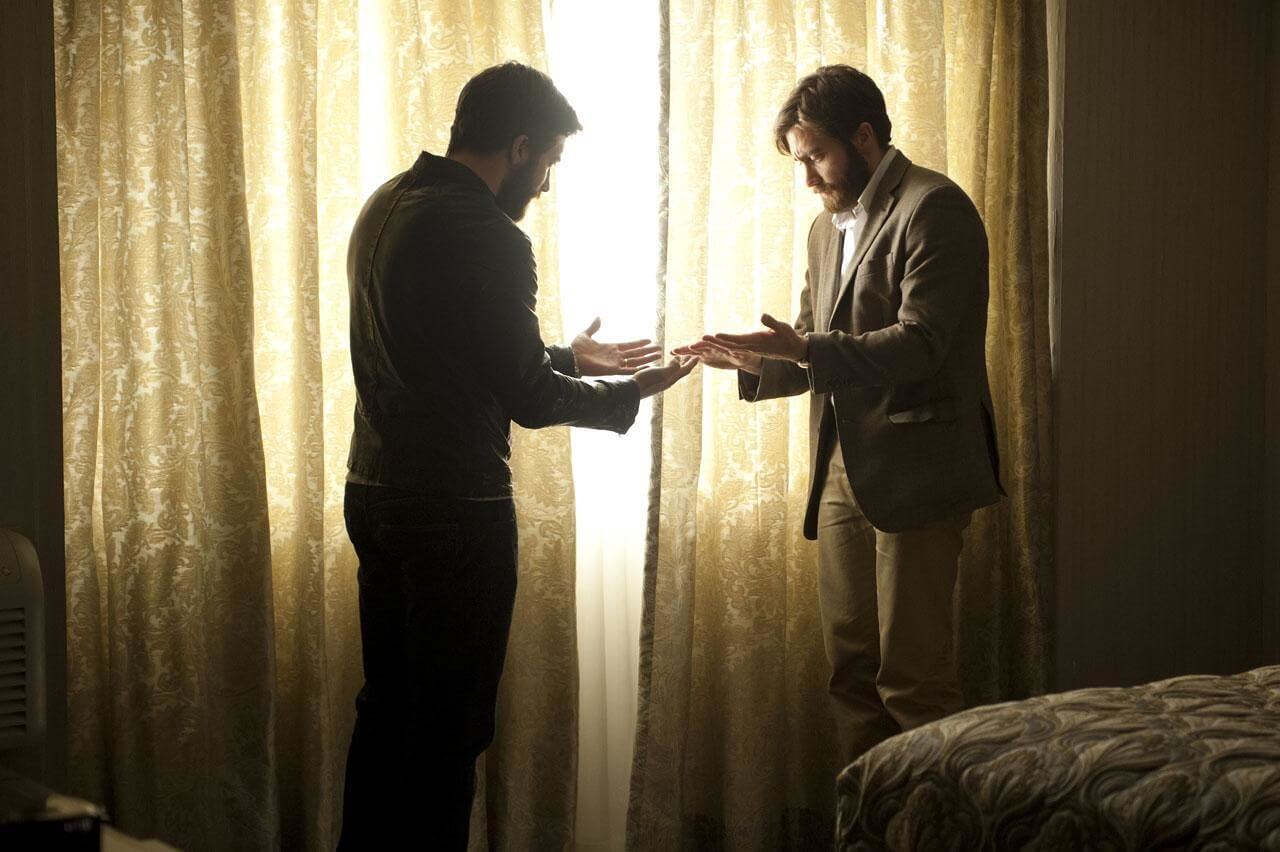
Enemy ‘s Split Personality
On the basic narrative level, Enemy tells the story of Adam (Jake Gyllenhaal in a dual role), an academic history teacher involved with a beautiful French woman. Through a series of random events, he stumbles upon a film featuring his double. Driven by curiosity, which soon turns into obsession, he decides to find this double. Adam’s life is depicted in a non-linear manner (which is discussed further below), causing the viewer to be thrown into a loop of his life, unable to discern the timeline of events. At this stage, however, the viewer can still rationalize the observed events. The plot thickens when the viewer is introduced to the life of the “double,” an actor named Anthony, who lives in a beautiful apartment with his pregnant wife. We observe a complete contrast to Adam, which in some way helps the viewer differentiate between the characters. Not only do their living standards differ entirely, but they are also entirely different personalities.
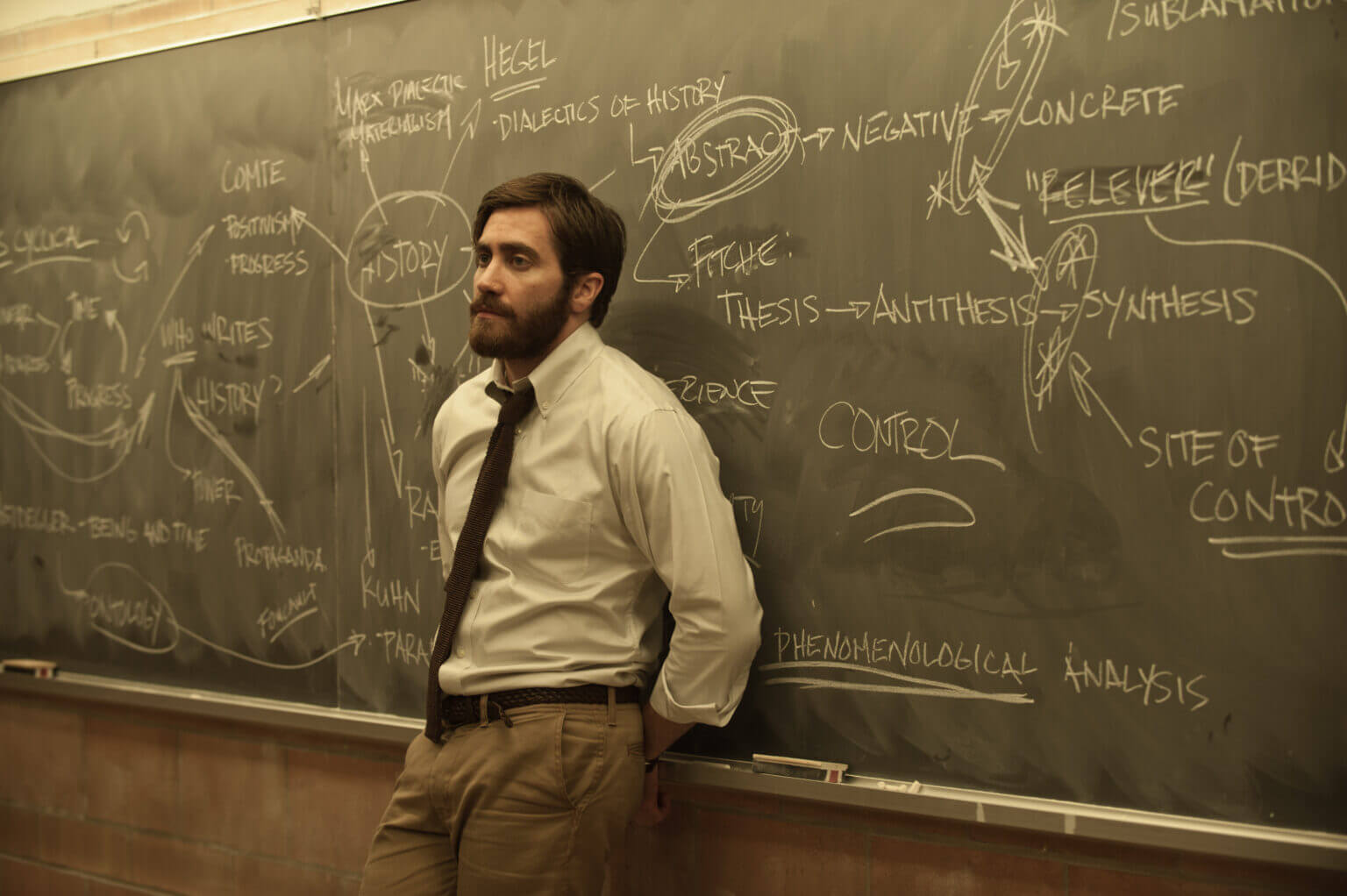
Adam is introverted, silent, and withdrawn, while Anthony is confident, assertive, and explosive. Even their body language exhibits two poles of personality. This stark dichotomy should signal to the viewer the essence of the characters’ personalities, but at this stage, rationalization still strongly prevails. Many scenes requiring deeper analysis reveal that we are, in fact, dealing with a single character. Particularly during the conversation with his mother, it is difficult to determine which character (Anthony or Adam) is speaking to her because the character exhibits traits of both. The mother’s words seem to contradict the viewer’s knowledge of the character. The pregnant wife’s later reaction to meeting the double seems exaggerated and overly emotional, signaling that she perceives her husband’s personality disintegration, feeling that she is losing him and cannot do anything about it.

Despite many hints scattered throughout the film, the viewer of Enemy falls into a trap like a spider’s web. It is no coincidence that spiders and webs are such a strong motif throughout the film, but it is only after its conclusion that we can reinterpret these symbols. Notably, similar to films like David Fincher‘s Fight Club, the first viewing is completely different from subsequent ones. The ending leads us to the thesis that the entire film is a projection of the main character’s personality, as we are in his mind, where a split into two personalities has occurred.
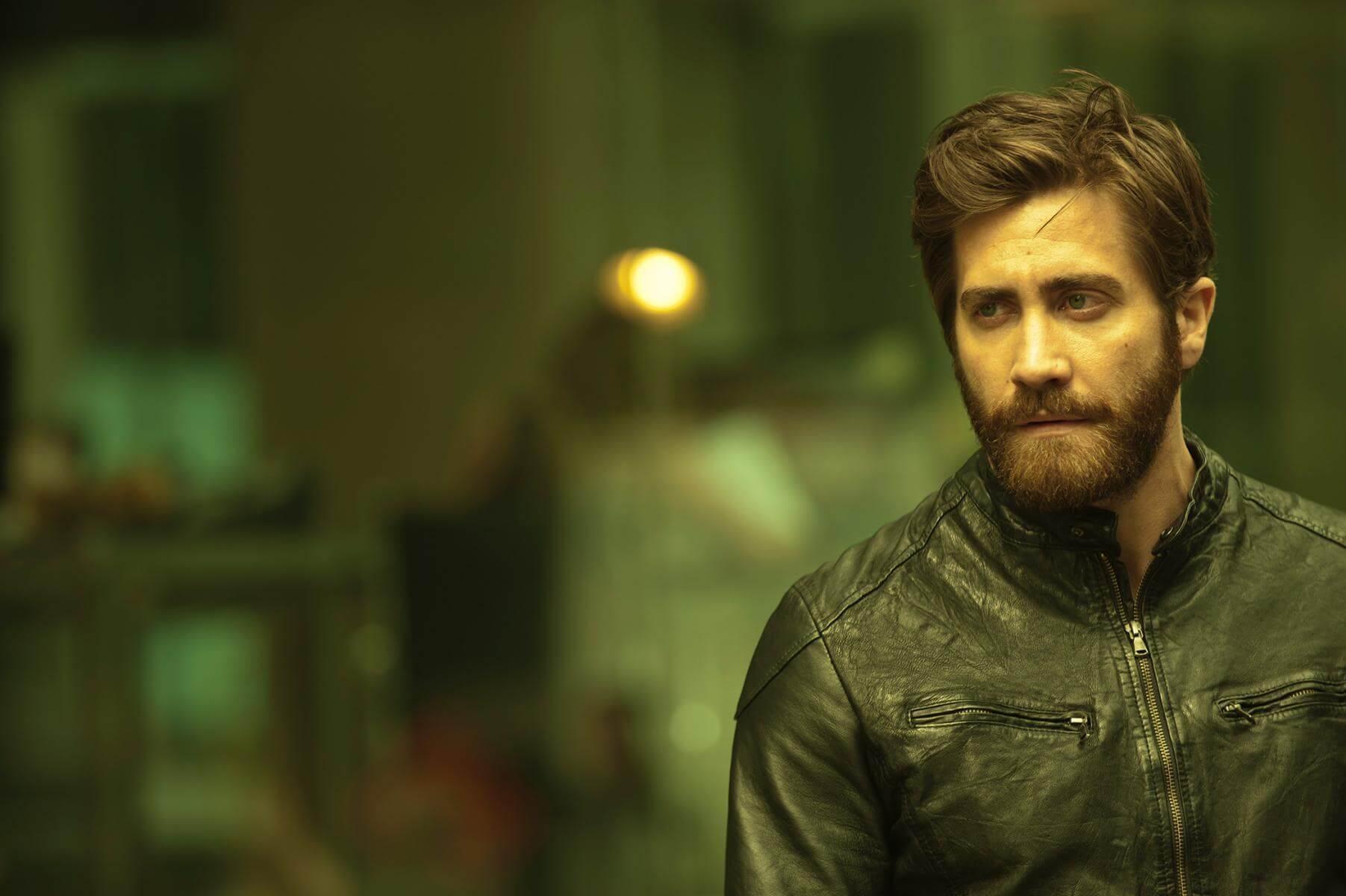
The split personality of the main character, perhaps due to fear of responsibility, starting a family, losing freedom, and the desire to free himself from female control (symbolically represented by spiders, but also directly articulated during the main character’s lectures), does not allow for a seamless connection of all threads. Primarily, the traits of one and the other character intermingle in individual scenes, sending misleading signals to the viewer, leading them into dead ends of the protagonist’s subconscious labyrinth. Additionally, the director decided to complicate matters by swapping the characters’ places. The viewer finds themselves in a situation similar to that of the main character – losing a stable image of their personality, unable to construct their identity from scraps of information. They start to struggle, losing control over their life. The viewer can somewhat piece together an image after the screening, but ultimately many interpretative paths remain, none of which seem definitive.
Space
In Enemy, we do not deal with a specific labyrinth, but analyzing the film’s presented world, we can note a specifically shaped space that influences the protagonist or rather corresponds to his mental states. Primarily, two extremely different planes can be distinguished in the film: closed and open spaces, which paradoxically serve similar functions – they besiege and alienate the main character. They are also similarly devoid of the human element, with the characters appearing alone with their fears and phobias.
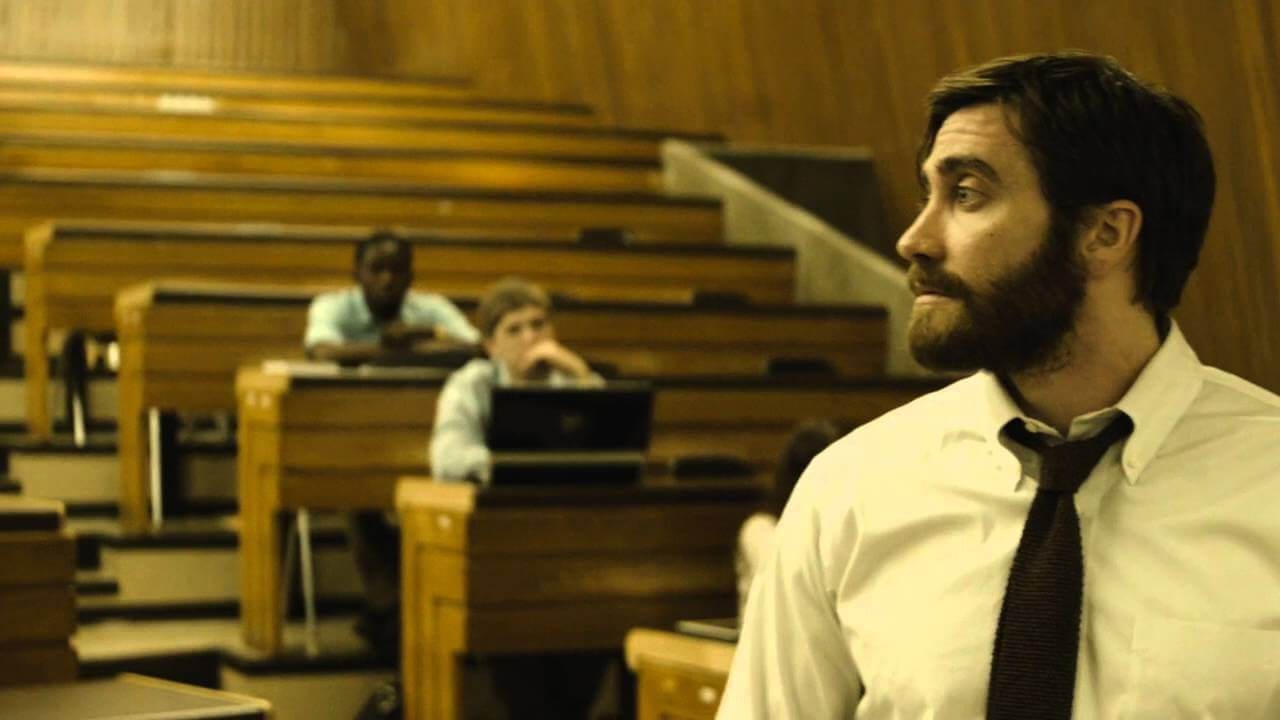
Closed spaces primarily include apartments – dark, giving the impression of being smaller than they could be in reality, claustrophobic, bathed in yellowish light. Even if we see a sunny day outside the windows, the interiors are hidden in semi-darkness. A similar “rotten” color palette, gloomy in perception, is found in the motel room where the characters’ confrontation occurs, a kind of non-place; as well as in the first scene, where the protagonist, through dark and winding corridors, reaches an exclusive sex club accessible only to a few anonymous figures. The characters often traverse empty corridors as if wandering, not knowing the way (in one scene, the protagonist, led by a porter, indeed does not know the way to his double’s apartment). Thus, it can be said that this is, in a way, a depicted labyrinth (real, tangible, not just narrative intricacy). The main character is also frequently shown in a car – another closed and devoid of other people space.
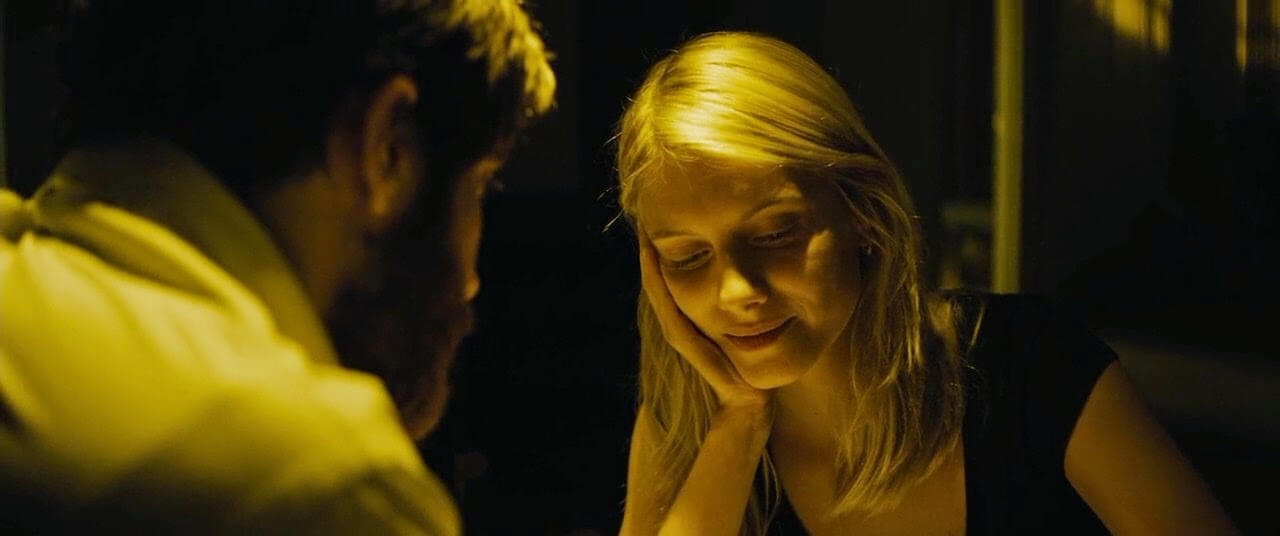
However, open spaces, instead of liberating the characters from the labyrinth, seem to be its continuation on a city-wide scale. Hence the multiple establishing shots that, in a way, show the labyrinth’s enormity, taking away the hope of escaping it. Architecture overwhelms the characters, seeming to tower over them, dominate, and control their every step. The skyscrapers are filmed from a very low camera angle, adding to their monumentality. Additionally, the city appears deserted, intensifying the protagonist’s fear and disorientation. It is not about merely presenting the space; it is not an objective depiction of the presented world but a world filtered through the main character’s perspective, appearing to us as threatening, hostile, chaotic, and incomprehensible. We have a sense of entrapment, timelessness, and the impossibility of escaping this world. The viewer tries to find a point of reference, but every semblance of sensibility is only temporary.
Subconscious
Enemy repeatedly refers to the metaphor of the circle, which also manifests in the structure of the image itself. To clearly see the closed-loop structure – the labyrinth from which the main character cannot find an exit – it is worth tracing the opening and closing of the film.

Enemy begins with an establishing shot of the city, with the main character’s mother’s voice recording a message on the answering machine in the background, then we see a character in a car, followed by a brief shot of a pregnant, naked woman looking almost directly into the camera. The screen displays the film’s motto: Chaos is order yet undeciphered. Immediately after, the scene in the sex club follows, filled with anonymous male figures, thus introducing the theme of repressed desires and hidden urges, elements of the protagonist’s subconscious, whose processes we witness throughout the film, as well as the symbolic, though not overtly highlighted, main motif: spiders embodying the protagonist’s fear of female domination and the associated loss of freedom. Although these themes do not take center stage throughout the film, they persist beneath the main plot’s surface – the confrontation between the “actor” (Anthony) and the “professor” (Adam).

The final scene of Enemy, however, depicts the main character’s attempt to subdue his dark urges and symbolically kill his other self. When we observe the protagonist reconciling with his wife, dealing with his other, destructive nature, the plot presents the real death in a car accident of the non-self, i.e., Anthony and the French lover. This would signify overcoming the destructive forces and thereby escaping the labyrinth. However, in the final scene, the protagonist opens a letter containing a key. The key implies that everything starts anew; the protagonist will most likely return to his former life. In his world, nothing changes, he returns to the starting point, remaining in the labyrinth of his desires, which he cannot control. The initial theme of the mother’s phone call, once again ignored, is repeated. The attempt to break free from the mother’s influence also proves futile. The film’s ending deprives the viewer of any rational explanations constructed so far. The final shot of the giant, frightened spider, a perfect “disorienting” and “strange” device, provides a narrative frame for the film. Only through this shot can we realize, revisiting the entire film, that we are dealing with the protagonist’s mental process, not a quasi-objective reality. This frame allows us to reinterpret all the film’s threads, applying a psychoanalytic key, and only then, after the screening, can we rationalize certain elements of the film. Only after the screening is it possible to unify the whole, as “a logical plan emerges from the apparent chaos,” signaled by the film’s initial motto.
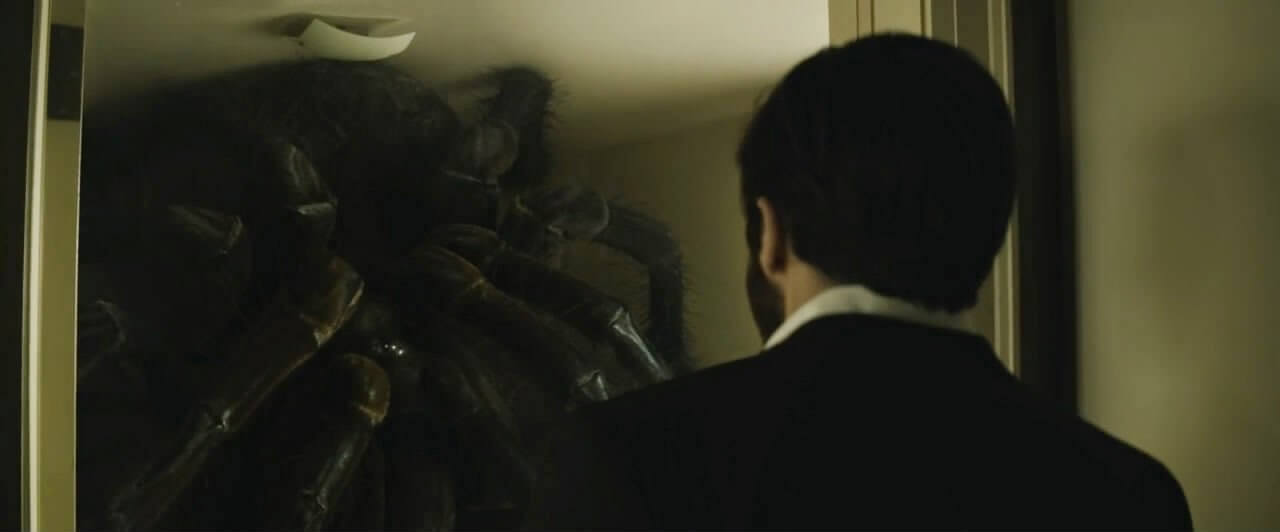
Therefore, just like a labyrinth, Enemy has a closed structure. The protagonist cannot escape the trap, so he wanders, returning to the same familiar places, repeating the pattern. The center of the labyrinth, and the place to which the protagonist continually returns, could be, on one hand, the pregnant wife, around whom the protagonist’s desires and fears are centered, as she is to some extent the source of the split in his psyche. She, or rather the fear she embodies, such as the fear of fatherhood, commitment, or loss of freedom. On the other hand, the center of the labyrinth can be seen as the key and the sex club, symbolizing repressed urges and unbridled desires, which continue to assert themselves, even when “killed” they return.
It is worth returning to the scene in which Adam, as an academic teacher, explains Hegel’s theory concerning the repeating pattern in history, saying: Hegel used to say that the most important events occurred twice. Marx added that the first time they were a tragedy, and the second time a farce. Simultaneously, the director shows us Adam’s life, fragmented by editing, thus disrupting the linearity of time. Initially, we do not know if these are similar situations occurring repeatedly, like the routine actions of the protagonist – work, sex, brushing teeth, commuting, arguing with his girlfriend. Later, due to our tendency to unify the plot, we create from these fragments one day or one situation – an argument with his girlfriend, even though we are dealing with a very clear disruption without a superior organizing principle.
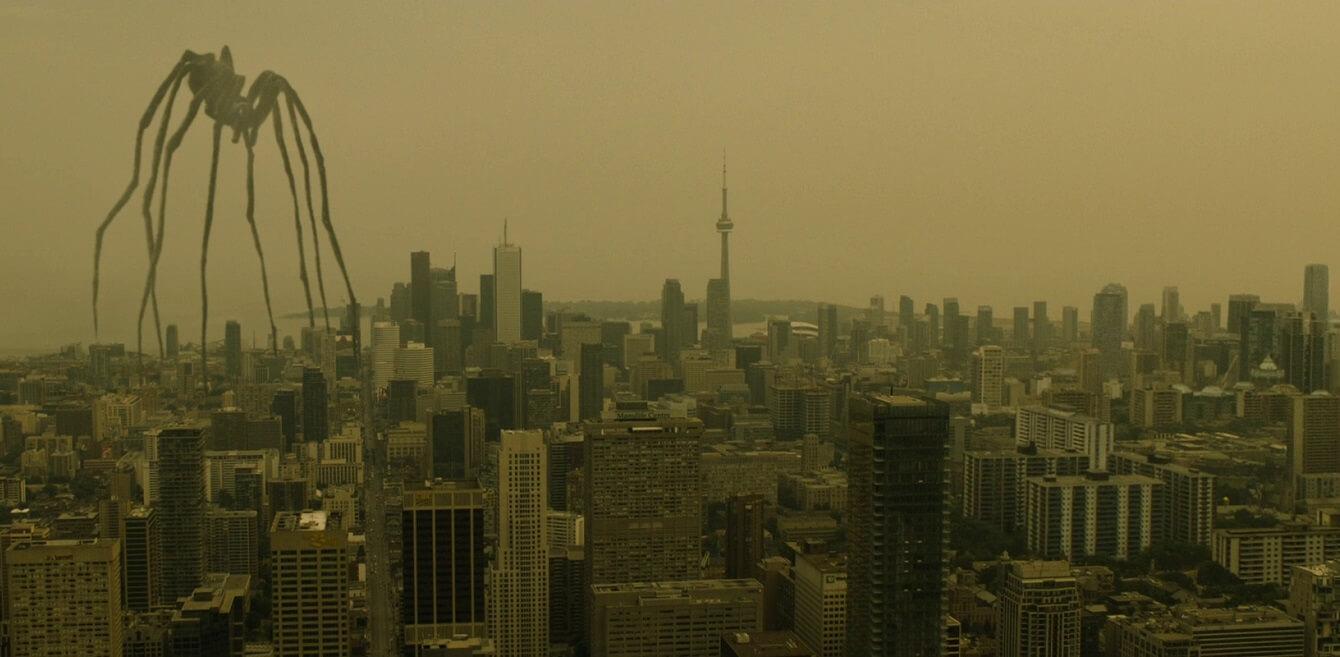
Bearing in mind the words about the repetitiveness of the world, we can assume that the initial tragedy of the protagonist, which is his inability to cope with the necessity of abandoning his previous life, ultimately transforms, as the director suggests, into a farce. The protagonist’s return to his old life means making a full circle and returning to the starting point, and the only thing he can do is to meet it with a bitter smile.
Words: Marta Zabdyr

